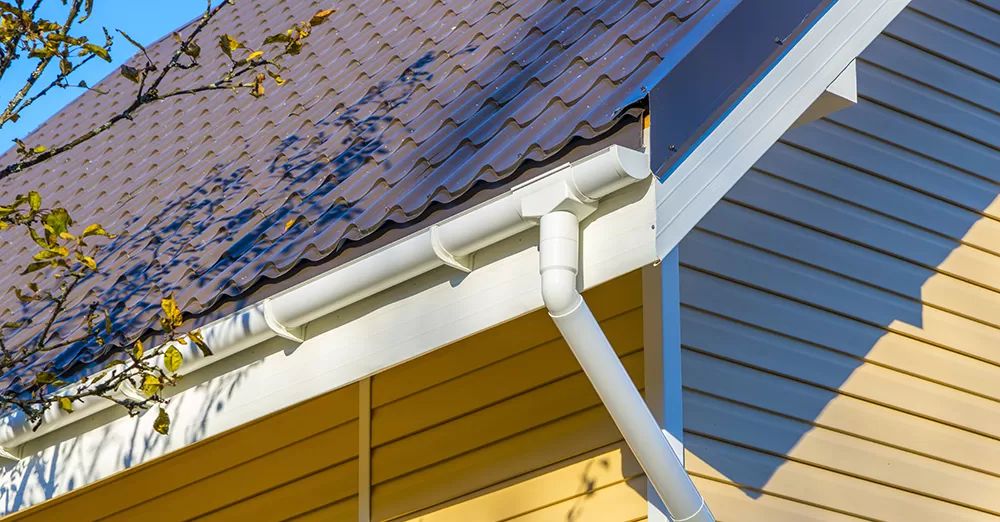
How Far Should Tree Branches Be From House?
Got some tree branches hanging over your roof and worried that they might damage your property? When not knowing how far should tree branches be from house, your home is in danger!
Having a tree in your yard comes with great responsibility. When you’re not careful, your house can be at great risk. For this reason, you should know which is the safest distance there should be between tree branches and your home.��
Not only that, but homeowners should know if it’s better to just trim their trees or to completely remove them. That way, you’ll be able to prevent damage from any branches falling over your home.
So, stay on the safe side and keep on reading!
How Far Should Tree Branches Be from House?
So, how far should tree branches be from house? Generally speaking, the safest distance your house must be from a tree is around 20 feet. When it comes to its branches, the closest your branches should be is at least 10 feet away radius.
Additionally, bear in mind that the space between a house and a tree can vary on a lot of factors. These factors include the tree’s condition, its size, and if it counts on shallow roots.
When planting a tree, homeowners must be mindful of the kind of tree their planting. Also, you’ll want to have a tree that won’t affect your home, your neighbor’s property, or any electricity lines nearby. You’ll want to have a tree that won’t harm both above your home as well as underneath it.
Down below you can see a sketch that shows you the safe areas in which you can plant each tree type:
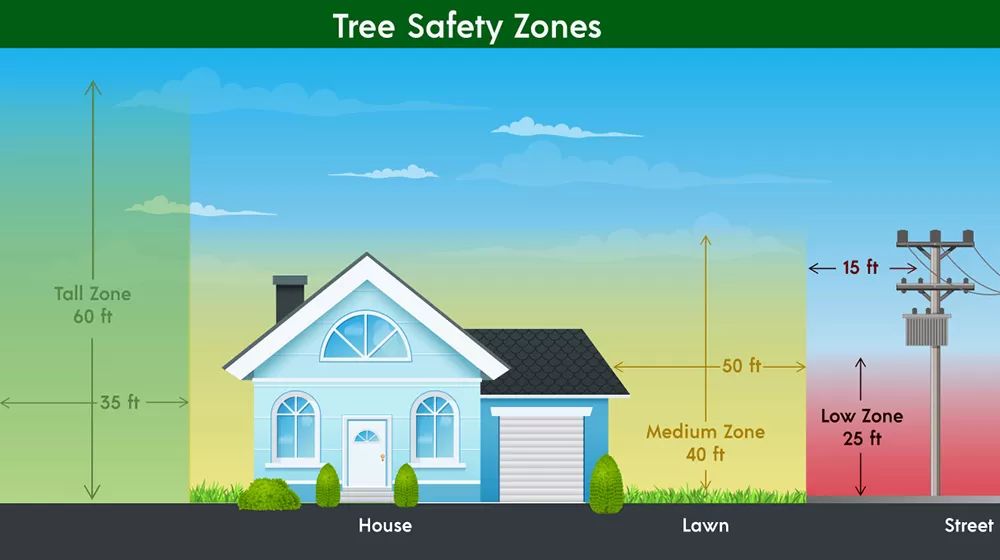
Trees that grow no more than 10 feet need to be at least 15 feet away from any powerline. This area is what we know as the “Low Zone”, which we highlighted in red.
For trees that grow 40 feet or less, you’ll need to keep them 50 feet away from any powerline and 20 feet away from your home. This zone is the “Medium Zone” and we shaded it in yellow. This area works great for shade trees, and you can complement them with shrubs.
Lastly, we have the “Tall Zone”. This green area is for any tree type that grows up to 60 feet. Consider having these trees at least 35 feet away from your home. That way, your tree will have the proper root development it needs, as well as you’ll minimize any damage to your house.
What Are the Dangers of Branches that Hang Over Your Home?
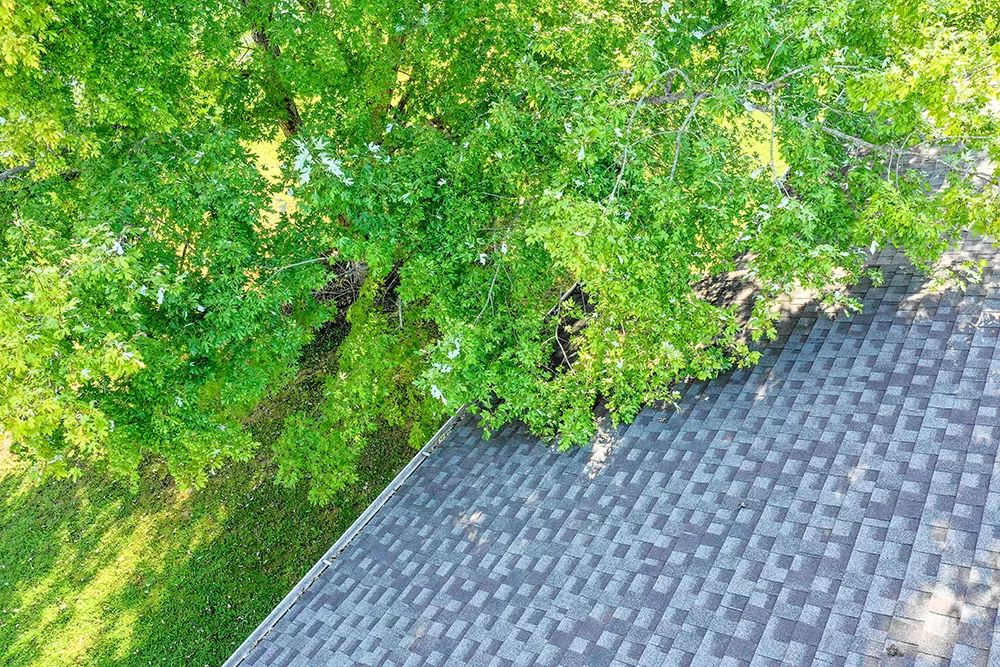
When tree limbs start to overhang close to your home, your house is susceptible to lots of damages. If any tree isn’t inside its matching zone explained above, then your property in jeopardy.
Here are some of the most common problems overhanging branches bring to your home:
- Tearing of your roof’s layers of asphalt
- Clogged gutters
- Broken shingles and leaking roofs
- Animal and pest infestations
Tearing of Your Roof’s Layers of Asphalt
One common problem a homeowner might have is that overhanging branches may start to tear off your roof’s layers of asphalt. No matter their size or height, all tree branches can easily wear down and scrape your roof’s tiles. From your deckings to ridge caps, tree limbs can take a heavy toll on your roof.
Clogged Gutters
Another frequent problem that trees too close your home might bring is clogged gutters. This issue tends to happen a lot, especially during windy days. Leaves and other types of debris might fall onto your roof. Not only can this debris obstruct your gutters, but it can also bring problems such as mold growth.
Broken Shingles and Leaking
Also, when a tree limb falls over your roof, then it can cause all sorts of injuries to your roof. Among these injuries, we have broken shingles, leak dangers, and even making a hole through your roof! Ultimately, it can lead to its overall decay.
Animal and Pest Infestation
Lastly, branches that are hanging over your roof can act as a bridge for all sorts of pest invasions and animals. This case is especially true when counting on damaged or diseased trees.
From ants and ticks to even raccoons and snakes, branches provide an easy route that eventually deteriorates your roof. The worst part is that once these pests have an easy way to your roof, they can start attacking the rest of your home!
How to Handle Branches that Hang Over Your Home?
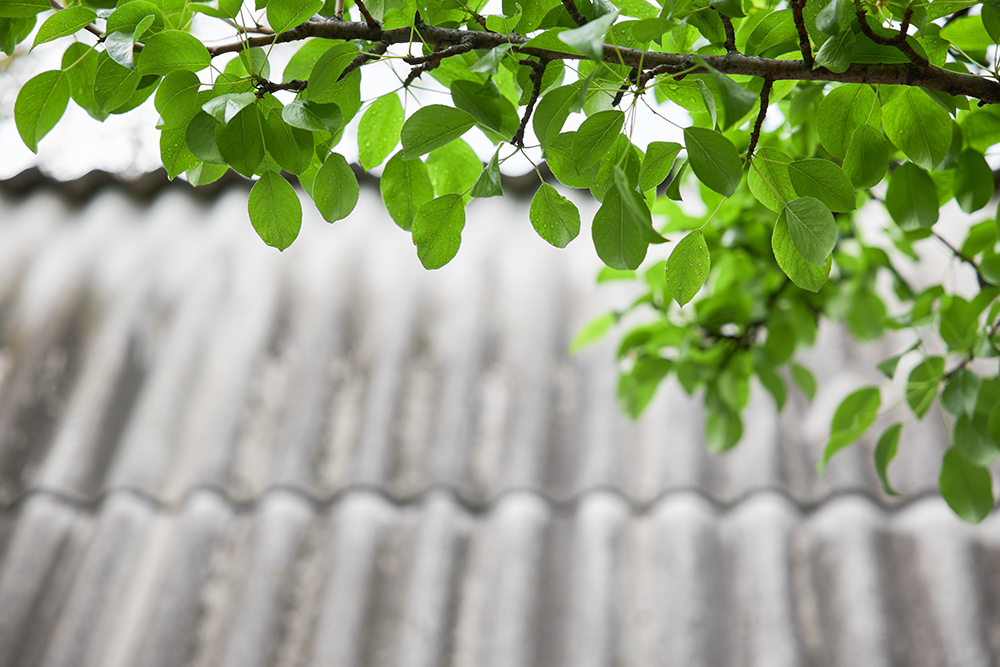
Now that you know how far should tree branches be from house and the potential danger they bring, you should know the best way to tackle this problem.
Homeowners must be careful since there are many hazards involved. Branches can fall down onto your roof if you cut them poorly. Not only can they harm it, but you can also be at risk by climbing up to your roof.
For this reason, if you don’t count on previous experience in handling this sort of situation, then it’s best to have a professional take care of the job. An expert tree technician will help you out deciding if it’s best to trim off your tree or if it’s time to completely remove it. They’ll also provide the tree care it deserves.
Can I Make My Neighbor Trim His Tree?
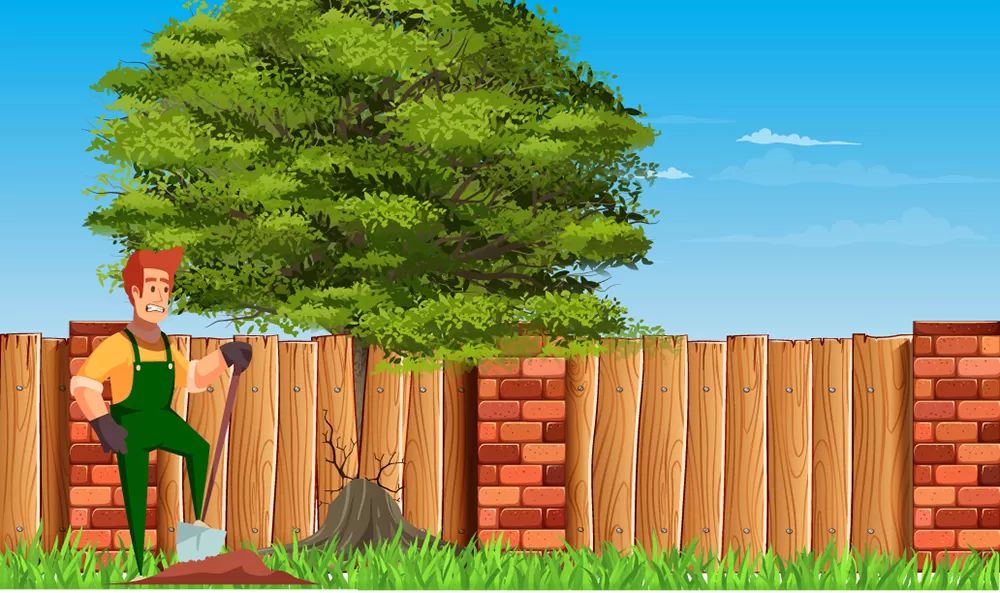
Many times, a neighbor’s tree can start threatening your property if it starts to limb over your house. If this is the case, then we advise you to contact your neighbors as soon as possible to calmly notify them of the potential damage the overhanging branches bring.
In case your neighbor doesn’t take action, check if the tree isn’t legally protected by a preservation order. If it isn’t, then you can trim off the branches that are extending over your property. However, before doing so, be sure to tell your neighbors as well. Additionally, be sure to check on your state’s laws too.
In case your neighbor’s tree has roots that are invading your property, you would need to have a professional handle the job. An expert tree service provider will then evaluate the potential damage the roots have.
Having a tree can bring lots of benefits to your place. However, you must also take good care of it to avoid any risks. Now that you know the safest distance between your home and your trees, your property should be safe.



